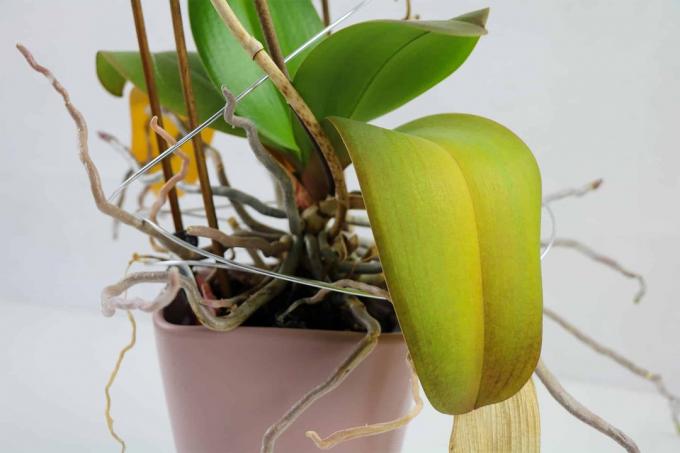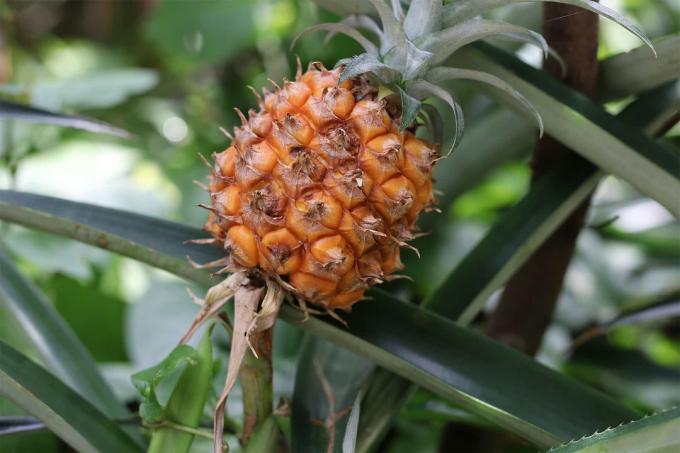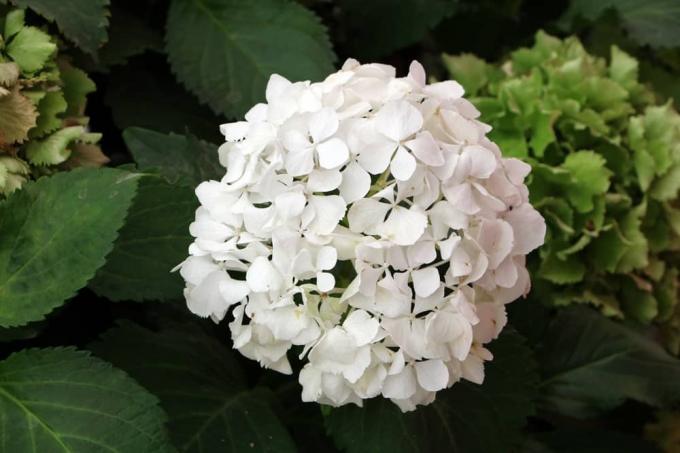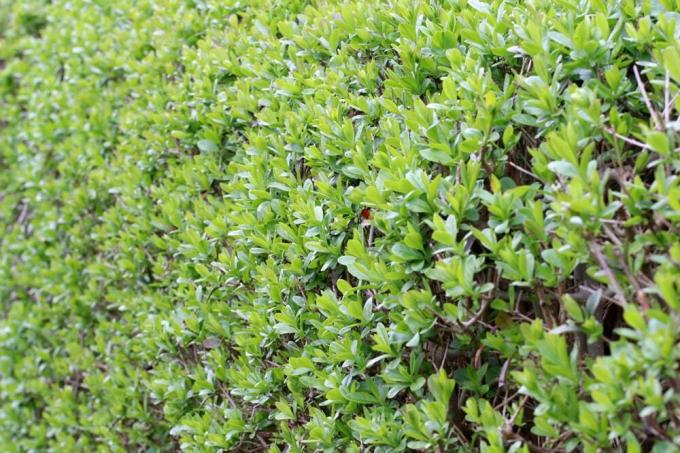

Table of contents
- Location
- soil conditions and substrate
- watering and fertilizing
- Cut
- hibernate
- repot
- multiply
- child
- sowing
- Conclusion
The huge flowers take your breath away as they rise above the mighty leaves in summer. Decorated all over with graceful little bells in elegant creamy white, the ornamental value of a garden Yucca Filamentosa during the flowering period can hardly be surpassed. Thanks to its majestic habit, the evergreen foliage and the robust winter hardiness, the palm lily is decorative in the garden at any time of the year. The following lines will tell you what amount of care the agave plant requires for this masterpiece and how the stemless plant is to be cut.
Location
By choosing the location, you define the actual scope of care for a palm lily. At the same time, an adequate location serves as a springboard for magnificent growth, which results in early flowering that otherwise only appears at an advanced age.
- Full sun, warm position
- No danger of cold drafts or strong winds
- Ideally protected by a wall, a high fence or a pergola
Stagnating heat in summer is just as little a problem for the garden yucca as blazing sunshine. On the contrary, the exotic agave really comes to life under tropical weather conditions.
soil conditions and substrate
The monumental Yucca Filamentosa serves as the dominant accent plant in rock gardens, steppe heaths, rock formations and gravel beds, as well as prominently located beds. It fulfills this task all the more effectively the better the soil is tailored to its requirements. The following attributes matter:
- Sandy-loamy garden soil, lean and well-drained
- Humic, dry and well drained
- Neutral to slightly calcareous
In the bucket, good potting soil is primarily considered, which is optimized by adding sand, perlite, lava granules or expanded clay. Conventional potting soil, on the other hand, tends to compact quickly, which would cause the roots to rot within a short time.
Tip:
Prudent hobby gardeners place palm lilies on special feet in the tub so that excess water can drain off better and additional ventilation takes place from below.
watering and fertilizing
A supportive water supply is only required in the phase during which a young garden Yucca Filamentosa is growing. Once the roots have gained a foothold, it is content with the natural rainfall. However, if there is a summer drought, the yucca is thoroughly watered when the substrate surface has dried. In the bucket, on the other hand, the water requirement proves to be higher, given the tight volume:
- Water the garden yucca in the planter regularly after a thumb test
- Give a long-term fertilizer in the spring to start
- Alternatively, work in compost, horn shavings or granulated cattle manure every 4 weeks from March to July
- Do not apply fertilizer from August so that the yucca can mature before winter
A palm lily in a bucket is supplied with a liquid preparation or fertilizer sticks once a year. In the planting year after repotting, there is no need for an additional nutrient supply, since the substrates are usually sufficiently pre-fertilized.
Tip:
Repeated watering with pond water eliminates the need for fertilizer due to the natural nutrient content.
Cut
One of the typical characteristics of a garden yucca filamentosa is its stemless habit. It is therefore clear at first glance that a pruning is not necessary according to the classical understanding. For visual reasons, the removal of dried leaves is recommended. Cut them off with a sharp knife. Since there is a residue left on the plant that could rot, you can tear off the sword blade with a jerk. Wear robust work gloves when doing this work so that you do not injure yourself on the sharp blade edges.
If the impressive flower has withered in July or August, it is trimmed. However, do not rush into this maintenance work. With a little luck, decorative capsule fruits will also appear, which also contain seeds for propagation.
hibernate
An established palm lily easily withstands frosty temperatures down to -30 degrees Celsius. Winter protection is only an advantage outdoors in the year of planting.
- Tie the leaves together before the first frost
- Put a jute sack or garden fleece over it
- Cover the root area with fir fronds, straw or brushwood
- When there is a frost, water a garden yucca a little on a frost-free day

Container plants resettle every year in a frost-free winter quarters. Due to the exposed position of the root ball in the planter, there is a high risk that it will freeze through. Where space is at a premium, the pot should at least be placed on an insulating material, such as wood or styrofoam. In addition, a bubble wrap cover keeps icy winter storms at bay. A thick layer of foliage protects the substrate.
Tip:
Don't let yucca dry out completely in winter quarters. Spray with water from time to time to protect against spider mites or other pests.
repot
If the roots protrude from the opening in the bottom of the tub or press through the substrate, you can no longer avoid repotting. A suitable time for this care measure is early spring, just before the new shoots. In these steps it succeeds:
- Put on robust work clothing, gloves and protective goggles
- In the new bucket, create a 5-10 cm high drainage made of gravel, grit or broken pottery
- Fill in the recommended substrate halfway
- Unpot the yucca and place in the middle of the new pot
- Fill the cavities with soil and press down repeatedly with your fist
Only fill in the potting soil so that a pouring rim remains. Then water the repotted palm lily extensively. Incidentally, the procedure of transplanting offers an excellent opportunity to take a close look at the root ball. Cut out rotten and severely twisted root strands with a sharp, sanitized knife.
multiply
If you want more specimens of a garden Yucca Filamentosa, you have the choice of different methods of propagation:
child
A palm lily takes care of the propagation in two ways: on the one hand, it produces berries with seeds and, on the other hand, it allows daughter plants to thrive at the base. These Kindel are fully developed young plants with the exact attributes of their mother plant. So they are used for offspring:
- In the fall, select children with a height of at least 20 centimeters
- Separate from the mother plant with a sharp knife or a spirited spade
- Plant in a large pot with nutrient-poor, sandy substrate
- Water occasionally in a bright location at 5-10 degrees Celsius
By next spring, the daughter plants will have developed their own root system and will be planted out.
sowing
The seed for propagation comes from the autumnal berries, which of course only rarely form in the local latitudes. Alternatively, the specialist trade has a corresponding offer ready.
- In February or March, soak the seeds in lukewarm chamomile tea for 12 hours
- Fill seed pots with seed soil or peat sand and moisten with a fine spray
- Press 1-2 seeds into the substrate at a time
- A glass or foil cover speeds up germination
At temperatures of at least 20 degrees Celsius in a partially shaded location, keep the substrate only slightly moist without causing waterlogging. If germination begins, the cover has done its duty. The young palm lilies are mature enough from a height of 20 cm to be planted outdoors or in a bucket.
Conclusion
The majestic size of a garden Yucca Filamentosa poses more of a challenge than actual care. This is limited to the prudent choice of a sunny, warm and sheltered location with lean, permeable soil. Regular watering is only necessary during the growth phase or during summer droughts. Fertilize limited to a springtime starter fertilization or an occasional portion of compost. Since the yucca grows stemless in the garden, pruning is limited to removing withered leaves and wilted flowers.
 garden editorial
garden editorial I write about everything that interests me in my garden.
Learn more about caring for plants

Plant hangs leaves despite water
If plants let their leaves hang despite water, this can have various causes. In order to prevent it from dying off by taking rapid countermeasures, you should find out about the possible causes and effective countermeasures here.

Plants hang their heads: what to do?
If the ornamental plants are cultivated in the garden or in pots and suddenly let their heads droop, then the question quickly arises as to why this can be. However, this is usually due to maintenance errors that need to be checked. If a remedy is found, most plants usually recover quickly.

Repot orchids: how & when to replant
Thanks to more uncomplicated and easy-care new breeds, orchids are now at home on many windowsills. In particular, the Phalaenopsis or butterfly orchid, which is available in countless varieties, is very popular. Read how and when you can best repot the distinctive beauties.

pull tree out of core | 7 tips for growing a tree yourself
Trees can be grown from cores without much effort. There are a variety of plants that have seeds and can be easily cultivated in your own garden. Special classic fruit trees should be mentioned, which are suitable for such a project.

How do hydrangeas stay white? | That way it won't turn pink
How do hydrangeas stay white - this is the question many hobby gardeners ask themselves when the hydrangea changes color. The white often turns into a pink, which is usually comparatively pale or can appear "dirty". Here we reveal how it works.

Cutting privet: when is the best time?
Privet is becoming increasingly popular and is often used as a privacy screen in the form of a privet hedge. This is not surprising, because the plant is easy to care for and fast-growing. However, it is crucial to cut the plant regularly at the right time.



